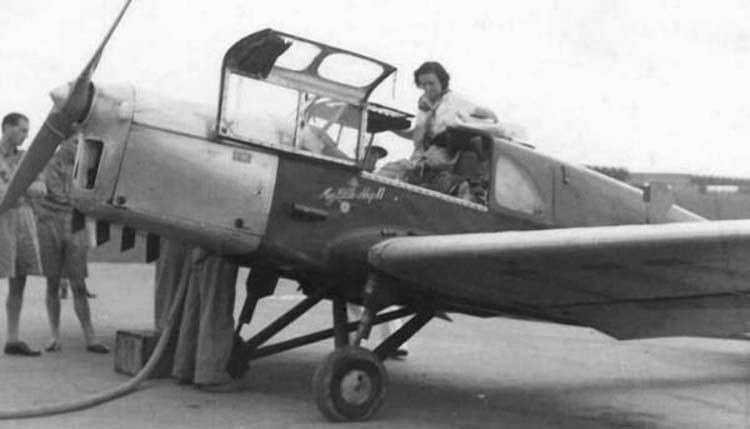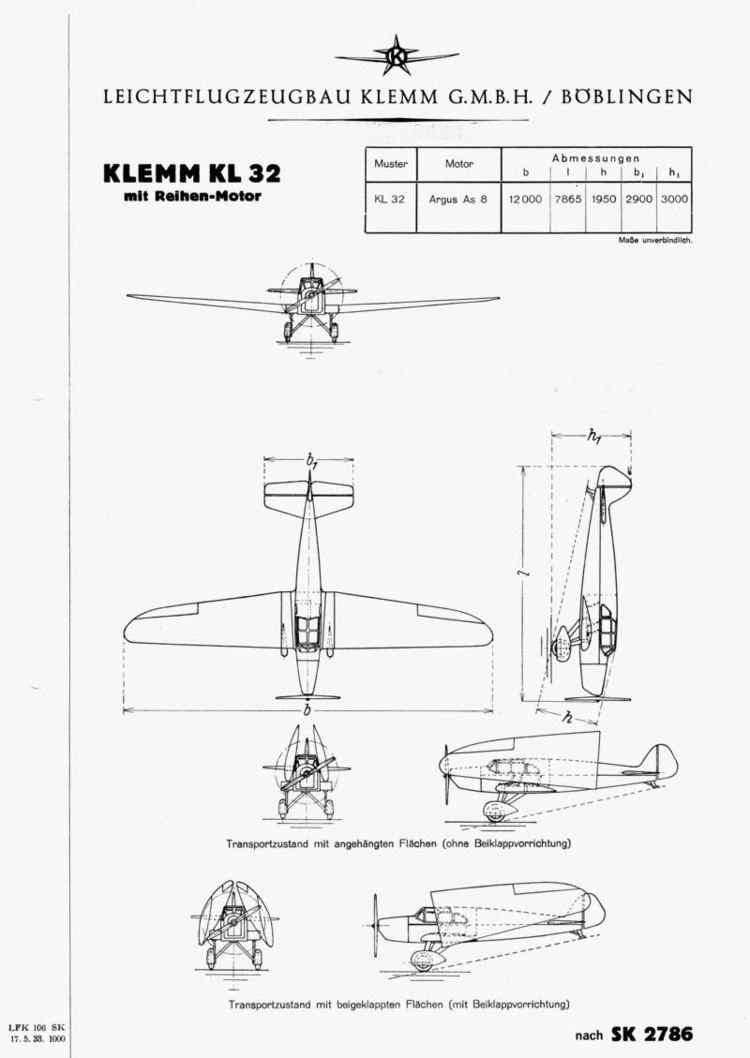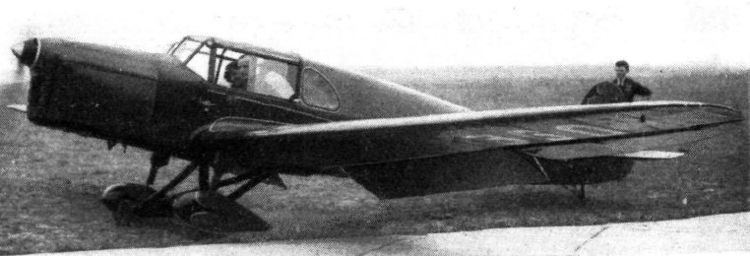Top speed 210 km/h Length 7.2 m | Wingspan 12 m First flight 1932 | |
 | ||
The Klemm Kl 32 was a touring aircraft developed in Germany in 1932 based on the Klemm Kl 31 as a competitor in the Challenge 1932 touring aircraft competition. Like its predecessor, it was a conventional, low-wing cantilever monoplane with fixed, tailskid undercarriage. The Kl 32, however, had a smaller cabin (seating three), and a fuselage built from wood rather than metal.

Eight Kl 32s were entered in the competition, seven by German teams and one by a Swiss team. These were powered by a variety of engines including the Bramo Sh 14, Argus As 8, de Havilland Gipsy, and Hirth HM 150. Notable German pilots included Robert Lusser (who designed the aircraft), Wolf Hirth, and Reinhold Poss.

Hirth won the short take-off trial in his Kl 32, and Poss tied for second place in the overall competition with his. Five of the teams flying Kl 32s finished in the top ten in the "rally over Europe" part of the competition, and five of the top ten scores overall were achieved by teams flying Kl 32s.

Specifications
General characteristics

Performance



